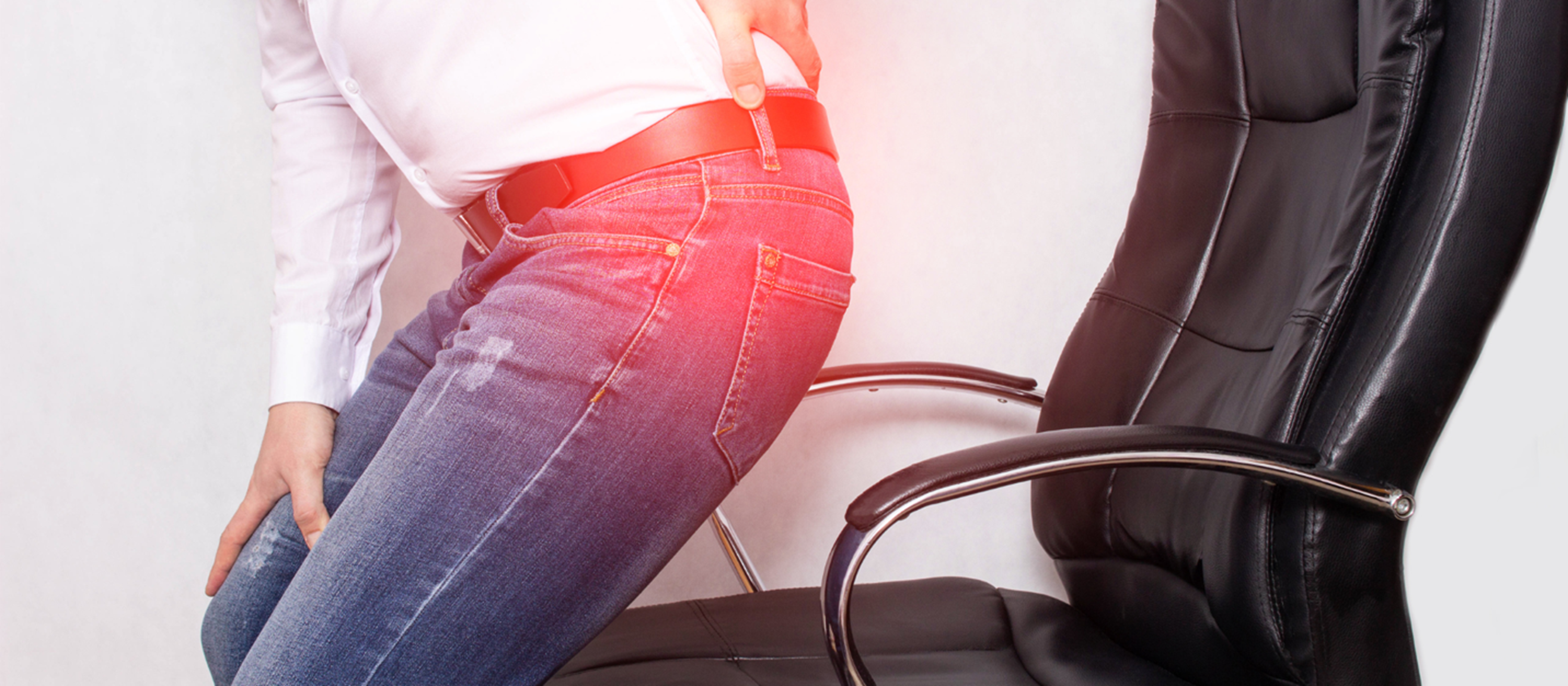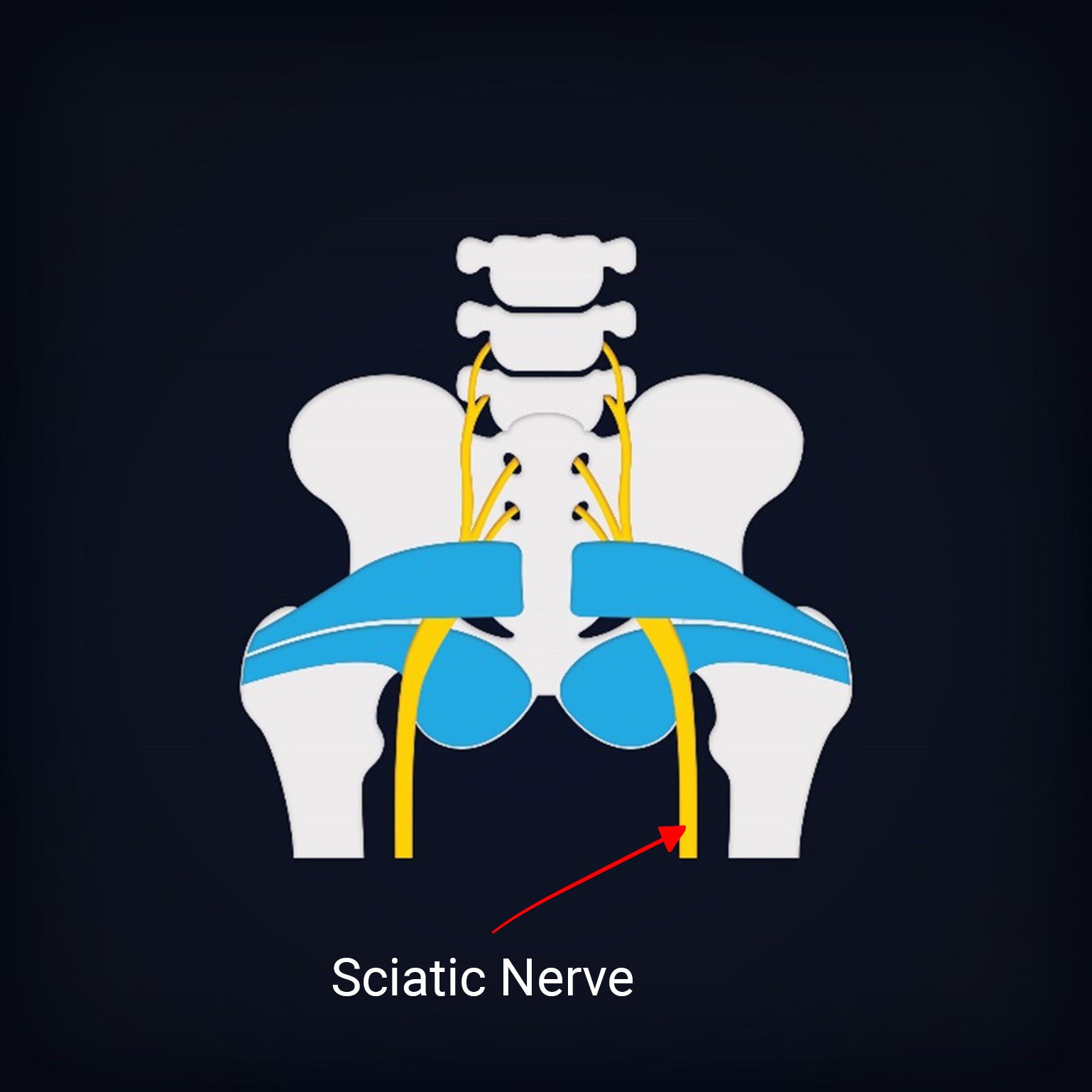Sciatic pain can be a frustrating and debilitating condition that affects far too many people. If you experience shooting pain, tingling, or numbness in your lower back, buttocks, or legs, you might be dealing with sciatic pain. The problem is, determining the source of this pain can be difficult.
In this blog, we'll discuss how to determine whether your sciatic pain is from your low back or your piriformis muscle.
Firstly, it's important to understand what the sciatic nerve is and how it functions in the body. The sciatic nerve is the longest nerve in the body, running from the lower back down through the legs and ending in the feet. If the sciatic nerve becomes compressed or inflamed, it can cause pain and other symptoms in the lower back, hips, and legs.
Low Back Origin
One common cause of sciatic pain is a herniated disc in the lumbar spine (lower back). This happens when one of the rubbery discs that cushion the vertebrae in the spine slips out of place, putting pressure on nerves that branch off the spinal cord. When this happens, you may experience pain that radiates down your leg, as well as numbness, tingling, and weakness in the affected limb.
Piriformis Syndrome Origin
Another potential cause of sciatic pain is piriformis syndrome. This condition occurs when the piriformis muscle, which runs from the pelvic bone to the top of the femur (thigh bone), becomes tight or inflamed and compresses the sciatic nerve. Piriformis syndrome can cause pain and discomfort in the buttocks, hips, and legs, similar to sciatica caused by a herniated disc.
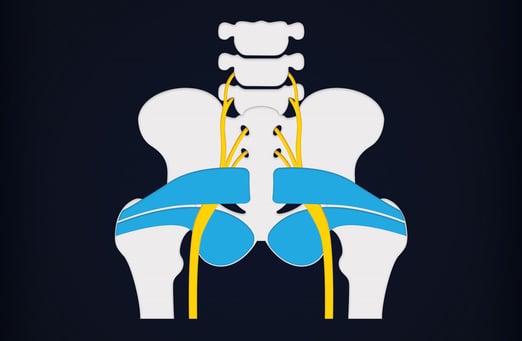
How Can I Know the Origin?
So, how can you determine whether your sciatic pain is from your low back or your piriformis muscle?
- Pay attention to the location of your pain.
If your pain is located primarily in your lower back and legs, and you experience numbness and tingling in your toes, it's likely that your sciatica is caused by a herniated disc in your lumbar spine. On the other hand, if your pain is primarily located in your buttocks and hips, it's more likely that your sciatica is caused by piriformis syndrome. - Pay attention to what causes more pain.
If you experience symptoms such as increased pain while sitting, it is most likely piriformis syndrome. If you experience more pain while raising the affected leg lying down, it is most likely low back origin.
To confirm the source of your sciatic pain, it's important to consult with a healthcare professional. A doctor or physical therapist can perform a thorough examination and diagnostic tests such as X-rays, MRIs, or nerve conduction studies to determine the root cause of your pain.
If you are looking to improve posture and decrease pain while sitting, look no further than Anthros.
Anthros is the only chair in the world that is guaranteed to improve posture or your money back. The science-backed, patented design is registered with the FDA as a posture-improving chair and is proven to have the lowest pressure (most comfortable) cushion on the planet (verified by university testing).
Take the next step to reducing pain, increasing comfort, and maximizing performance!
Reference:
- Ghauri, Majid. “Sciatica vs. Piriformis Syndrome: What Are the Main Differences? – Sapna: Spine and Pain Clinic of North America.” Spine and Pain Clinics of North America, 18 Sept. 2020, www.sapnamed.com/blog/sciatica-vs-piriformis-syndrome-what-are-the-main-differences/#:~:text=The%20primary%20diagnostic%20method%20is,extremity%2C%20it%20is%20likely%20sciatica.
Recent Post
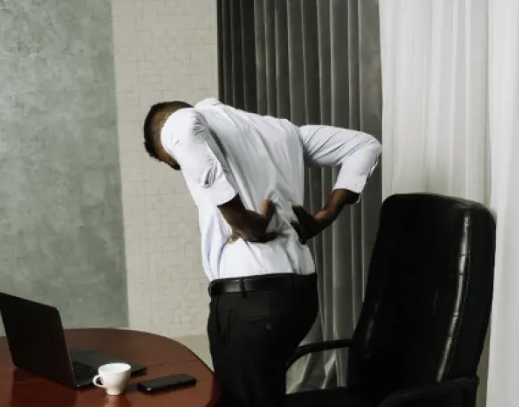
Exercises to Avoid With a Herniated Disc
March 6, 2025A herniated disc can put a serious damper on...

Gentle Back Exercises for Lower Back Pain & Herniated Discs
February 17, 2025Adding a cushion to your office or gaming chair...
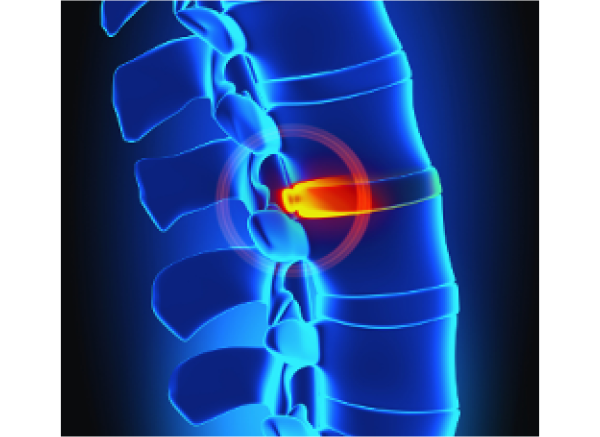
Bulging Disc vs. Herniated Disc:
February 5, 2025Adding a cushion to your office or gaming chair...






